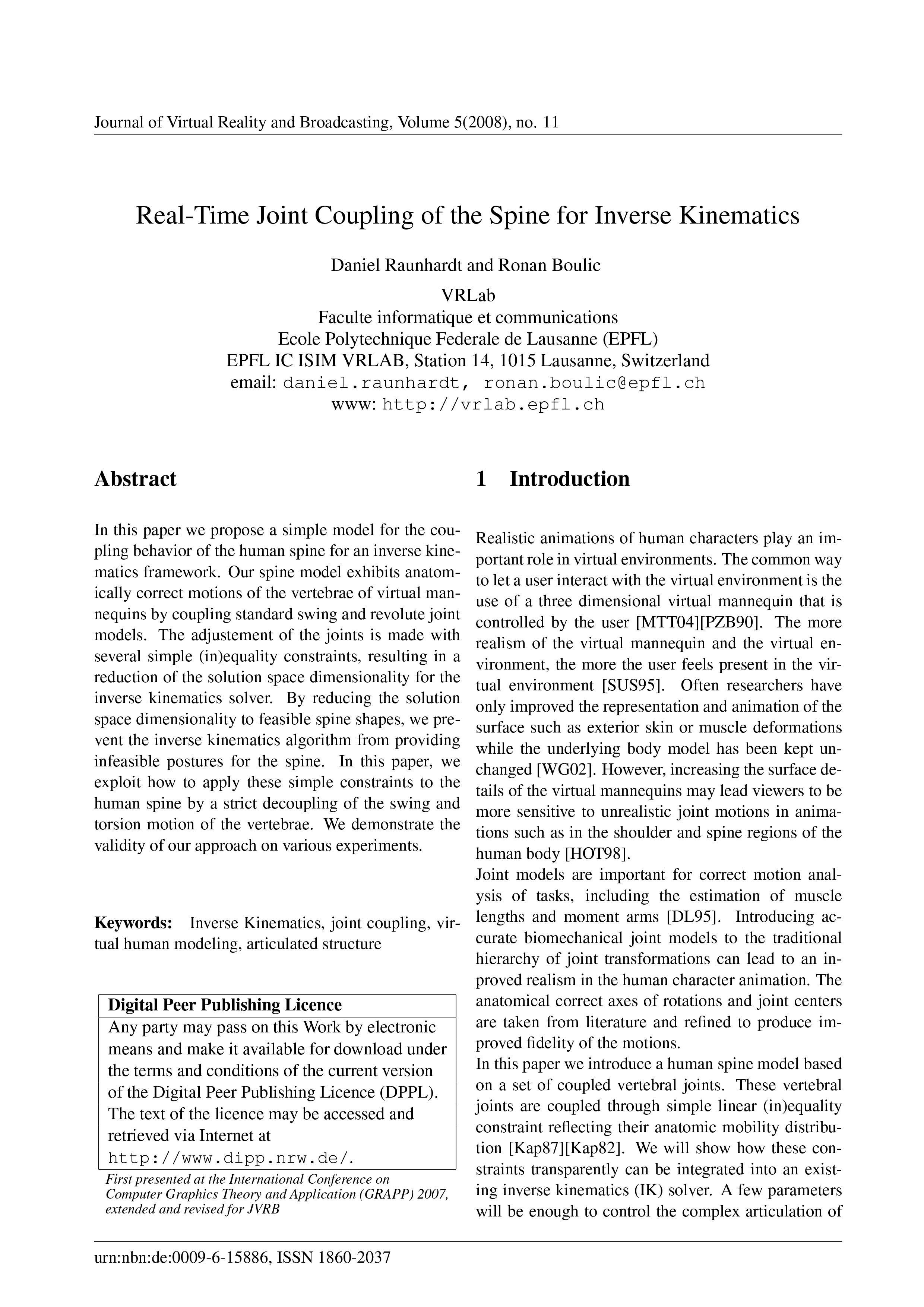Real-Time Joint Coupling of the Spine for Inverse Kinematics
DOI:
https://doi.org/10.20385/1860-2037/5.2008.11Keywords:
Articulated Structure, Inverse Kinematics, Joint Coupling, Virtual Human ModelingAbstract
In this paper we propose a simple model for the coupling behavior of the human spine for an inverse kinematics framework. Our spine model exhibits anatomically correct motions of the vertebrae of virtual mannequins by coupling standard swing and revolute joint models. The adjustement of the joints is made with several simple (in)equality constraints, resulting in a reduction of the solution space dimensionality for the inverse kinematics solver. By reducing the solution space dimensionality to feasible spine shapes, we prevent the inverse kinematics algorithm from providing infeasible postures for the spine.In this paper, we exploit how to apply these simple constraints to the human spine by a strict decoupling of the swing and torsion motion of the vertebrae. We demonstrate the validity of our approach on various experiments.
Published
2008-10-23
Issue
Section
GRAPP 2007





